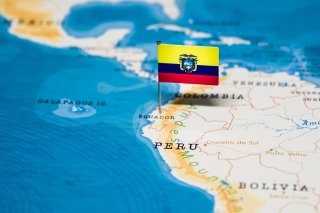Ecuador’s Tangled Web of Drug Trafficking and Security Vulnerabilities
The assassination of presidential candidate Fernando Villavicencio signals the profound and intricate relationships between politics, economy, and drug trafficking in North and South America.
The UN’s World Drug Report 2023 report illuminated a post-pandemic spike in cocaine demand, pinpointing the rise of new trafficking epicenters in West and Central Africa. But this is not a new development. By 2005, Latin American drug organizations had formed alliances with African clans that facilitated secure transit routes and logistical support. Africa offered a lack of regulatory control, fragile institutions, and rampant corruption. Statistics from AMERIPOL put West Africa accounting for 30 percent of Europe’s cocaine imports in 2013.
As Mexican cartels began to dominate the northern drug routes, Colombian groups were compelled to explore new avenues for trafficking. This shift coincided with rising cocaine demand in Europe and a decline in American consumption. With the United States ramping up its anti-drug measures, the euro gaining strength against the dollar, and Brazil’s escalating cocaine consumption as a top global consumer, the dynamics of the drug trade rapidly changed.
Evidence suggests that, since at least 2012, Colombian, Brazilian, and Peruvian cartels have funneled cocaine to Europe through Africa. The Primer Comando da Capital, a dominant force in the Santos port, oversees a significant portion of this trade. Additionally, the Familia Do Norte, handles a considerable share of the cocaine originating from Colombia. Notably, Guinea-Bissau’s former head of the Armed Forces, Antonio Indjai, faced trial in New York—though in absentia—for cocaine and arms trafficking with the FARC.
The narcotics landscape is rapidly changing. As the opioid crisis comes to the forefront, the patterns of cocaine consumption are transforming, reshaping global drug supply and demand dynamics. An alarming trend is the increasing dominance of fentanyl. With the drop in coca prices and its decreasing appeal for illegal trade, fentanyl stands out due to its cost-effective production, lucrative profit margins, surging demand, and simpler smuggling methods. This shift warrants our immediate attention and readiness.
The assassination of Fernando Villavicencio thus signals the profound and intricate relationships between politics, economy, and drug trafficking in North and South America. While Ecuador grapples with its emerging role in the drug trade, Colombia’s changing dynamics, shaped by geopolitical, economic, and cartel influences, highlight the complexity of the narcotics issue.
Carlo J.V. Caro is a political and military analyst. He has a graduate degree from Columbia University.
Image: Shutterstock.

